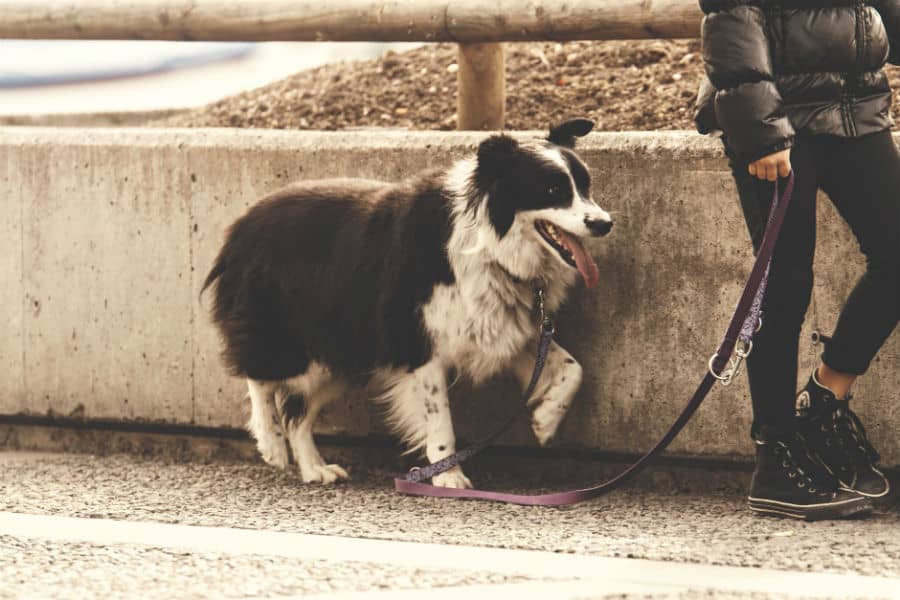Ask a dog owner the best way to walk a dog and you’ll get an array of answers. For decades, using a collar was the preferred way to control your four-legged companion. But a recent surge in the use of dog harnesses has made the routine task of walking our dog more confusing. Which method is right for you? I’ve done some analysis of my own to see if I could find an answer.

Advantages of a Collar
Price
Simply put, you can buy a dog collar for under $10. Even personalized ones with name and phone number can be purchased for under $20. For budget concious consumers, it’s tough to beat that affordability.
Styles
With more collars on the market, there are more designs to choose from. Nylon, leather, polyester and cotton round out the most popular options. You can find just about any color you can imagine too. Even major designers have thrown their hat in the ring here to provide some fashionable choices.
Simplicity
As someone who can get busy, every minute I can save is worth it. And collars provide the simplest way to walk your dog. Since the collar remains on all the time, it’s as simple as hooking up the leash and heading out to walk.
Disadvantages of a Collar
Constricting or Choking
Not every dog is perfectly trained to walk alongside us. Sometimes a squirrel pops up and they try to make a beeline for it. With a collar, you have less control and this can lead to constricting the airway or choking your pet. Even worse, over time it can lead to neck injuries that make their life uncomfortable.
Slipping Out
Growing up I had a beagle who could find his way out of anything. In fact, on numerous occasions he would figure out how to slip out of his collar while out for a walk. This led to the task of chasing him down and hoping he didn’t run out into traffic. While collars are secure for most dogs, if you have a slippery one, this might be an issue.
Advantages of a Harness
Control
Arguably the biggest advantage of a dog harness is having firm control over your pet. This is particularly important with bigger or aggressive dogs that can be hard to manage.
Types
While a collar works just one way, harnesses come in many shapes and sizes. There are harnesses for active dogs that provide padding and military grade threading. Smooth harnesses for maximum comfort for your pet. PetToy.co.uk has a quality guide to the best dog harnesses available today. A great breakdown for deciding which type works for your situation.
Safety
With a harness controlling the body, you don’t have to worry as much about injuries to your dog. There is no fear of neck injuries or strangulation. Plus with harnesses being larger, they can offer up features like reflective lighting at night for better visibility.
Disadvantages of a Harness
Time Consuming
Sometimes you want to throw on that leash and head out for that walk. But a harness requires taking a couple minutes to attach to your dog. Over time this will become easier, but if you have an impatient pet, it can turn into a struggle.
Conclusion
This will come across as a cop-out, but the choice depends on what kind of dog you have and how you approach walks. For bigger dogs that are hyper, I highly recommend going with a harness. Not just for peace of mind, but it will make it easier on your end too. Even if it requires some extra preparation.
For those with smaller or older dogs that are well-trained, a collar does the trick. Just be aware of their neck and whether they are putting unnecessary strain on it.
From a personal standpoint, I prefer the harness. After some initial issues getting used to it, my dog has learned to love it and it has made walks much simpler. Especially in a neighborhood full of other people with dogs.









